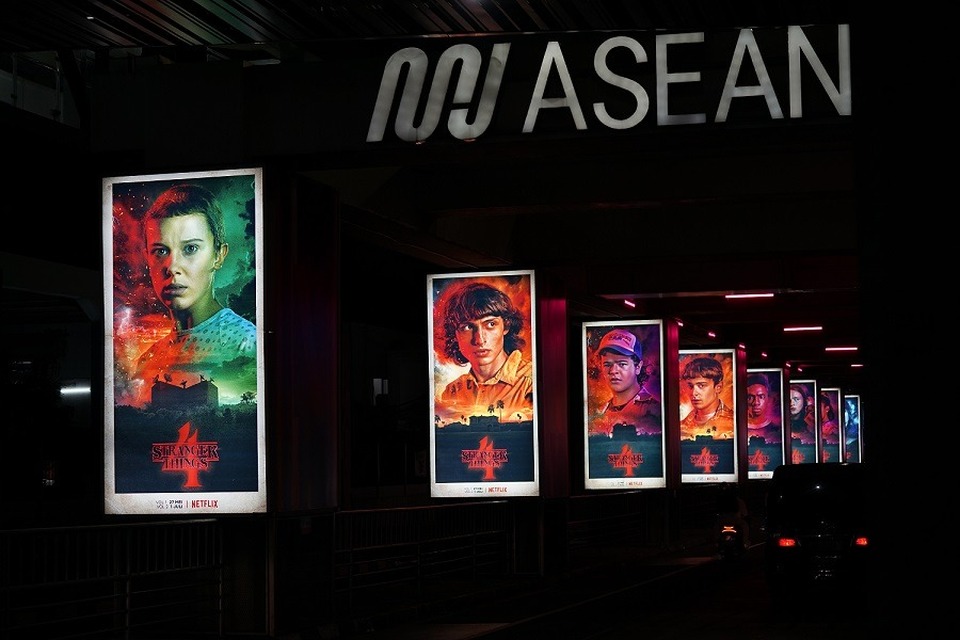
As urban landscapes grow and public transportation usage surges, brands are revisiting one of advertising’s most enduring formats—transit advertising. This form of advertising, which includes banners, posters, wrapping stickers, and digital displays on buses, trains, taxis, airports, and transit stations, is known for its strategic placement in high-traffic areas. Transit advertising aims to capture the attention of daily commuters and pedestrians, creating a powerful visual presence in bustling urban hubs.
Transit advertising, first popularized in major metropolitan areas, remains highly effective today because it places brand messaging in spaces where audiences are likely to spend substantial time with few distractions. As commuters move through transit systems, they encounter these ads repeatedly, which fosters brand recall. When designed with striking visuals and concise messages, transit ads make a lasting impression on potential consumers.
The Effectiveness of Transit Advertising in Modern Marketing
Studies have shown that transit advertising effectively enhances brand awareness and recall. According to the Outdoor Advertising Association of America (OAAA), 70% of urban residents report noticing transit ads, and 44% remember specific messaging afterward. In regions where public transport is integral to daily life, these ads gain even greater prominence, with commuters exposed to the same visuals on their regular routes.
The nature of transit advertising makes it especially impactful in places like Jakarta, where daily public transport use is high, and commuters spend hours navigating the city’s traffic. Placing ads in transit spaces not only helps brands reach a vast audience but also embeds the brand message in the routine journeys of thousands.
Kanzler’s Creative Twist with Nicholas Saputra
One standout example of transit advertising in Indonesia comes from Kanzler, the food brand known for its quality meats, which recently launched a campaign to promote its new line of crispy chicken nuggets. Partnering with AdsON Asia (a part of FAB Indonesia), Kanzler created an ad campaign featuring Indonesian heartthrob Nicholas Saputra, known for his typically reserved and enigmatic image. In this campaign, Saputra appears smiling and cooking in the kitchen—a rare and refreshing departure from his usual screen presence.
This unique portrayal resonated with audiences and caught the eye of passersby, not only through online platforms but also via out-of-home (OOH) ads in Jakarta’s busiest transit areas. Billboard and transit station ads with phrases like “Hati-hati di jalan” (translated to “be careful on the way”) and “Mau kemana?” (“where are you going?”) were cleverly aligned with the commuting experience, creating a connection between the brand, the setting, and the audience. This campaign generated substantial buzz, gathering over 120,000 views on Kanzler’s YouTube channel and receiving enthusiastic responses on social media, where fans praised the unexpected ad and shared their excitement. Read more about the campaign here.
The Shift Toward Digital Integration in Transit Ads
Transit advertising is evolving beyond traditional print and static displays. With digital innovation, brands can now feature dynamic content on digital screens within transit vehicles and stations. This trend aligns with consumers’ increased digital engagement and provides opportunities for brands to deliver rotating messages, time-specific ads, and interactive experiences. For example, the integration of QR codes has enabled consumers to engage directly with transit ads through their smartphones, accessing promotions or learning more about the brand in real-time. This technological upgrade allows brands to transition transit spaces into interactive hubs that engage consumers and provide measurable data.
The Role of Cultural Relevance and Local Appeal
In Indonesia, brands like Kanzler are increasingly tailoring transit ads to local tastes and cultural nuances. This cultural relevance resonates with Indonesian audiences, enhancing the ad’s memorability and encouraging brand affinity. Brands that tap into local personalities, customs, and humor in their transit ads can forge stronger connections with audiences. Beyond Kanzler, other brands in Indonesia have also embraced transit advertising to align with the lifestyle and preferences of urban consumers. For example, ads for products like Wallts lanyards, scarves, and prayer kits have been placed strategically in MRT stations, targeting Jakarta’s commuters and meeting immediate needs with convenience. These types of targeted transit ads align seamlessly with the daily lives of the city’s residents, adding utility to brand messaging.
A Lasting Impact
While digital marketing is often prioritized today, the enduring effectiveness of transit advertising underscores the importance of diversified marketing strategies. In cities with well-developed public transport systems, the impact of transit advertising remains unmatched. As brands continue to innovate and personalize their transit ads to align with local cultures and consumer behaviors, transit advertising proves that it’s far from being a relic—it’s an evolving medium with lasting appeal.
Transit advertising isn’t just about visibility; it’s about becoming part of the city’s rhythm, placing the brand in the path of everyday life. For brands aiming to stay top-of-mind with consumers on the go, transit advertising offers a unique opportunity to make a memorable impact, turning daily commutes into brand-building journeys.
Image Source:
For more information, please contact:
Inasa Ori Sativa
Corporate Communications Lead
e: inasa.sativa@fabindonesia.com
p: +62 858-7085-2010







